Dark Tourism Adventure to London.
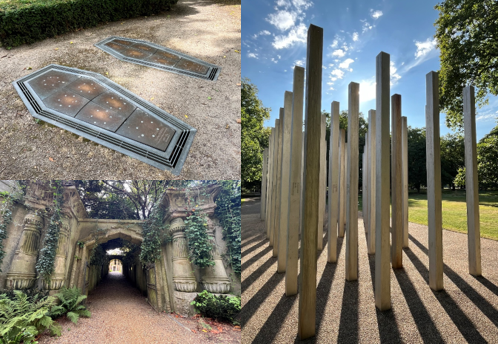
Taking an unexpected trip is one of my favorite things to do; my partner and I did just that a few weeks ago. The night before, we decided to head to London.
During the process of my book, there were a few locations in London that I really wanted to visit: the Tower of London, the 7/7 memorial and the west side of Highgate Cemetery, as I had already been to the east side. With having only make the decision to go to London the night beforehand we were lucky to have found accommodation in Aldgate, which made our trip easier to explore the sights of London in the daytime and nighttime as there is a night tube service that operates on both Friday and Saturday night.
Joseph Grimaldi Park
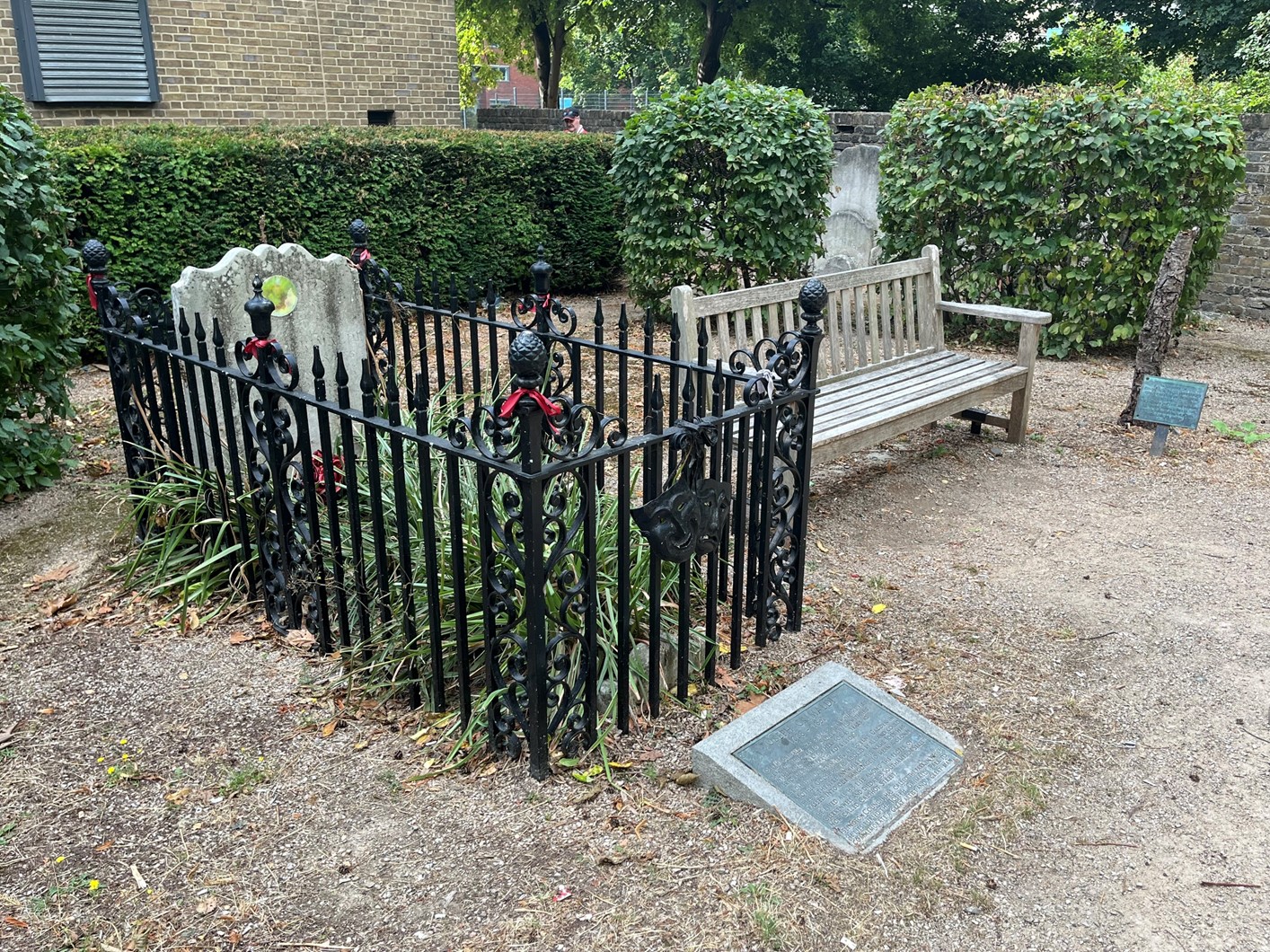
Our first visit was to the grave of Joseph Grimaldi. Having written about this place for my book, I was interested in visiting this site for its unusualness. Grimaldi’s grave is located in a park named after him, near Kings Cross station. It is an ideal place for those wishing to escape the bustling streets of London. While the grave of Grimaldi is not an accurate burial place of his, it is a prominent feature of the park being adorned with mementos. Though they may not sound as good as they once did, the two musical coffin-shaped graves in the park nonetheless add a special touch in remembering pantomime clown Joseph Grimaldi.
7 July Memorial
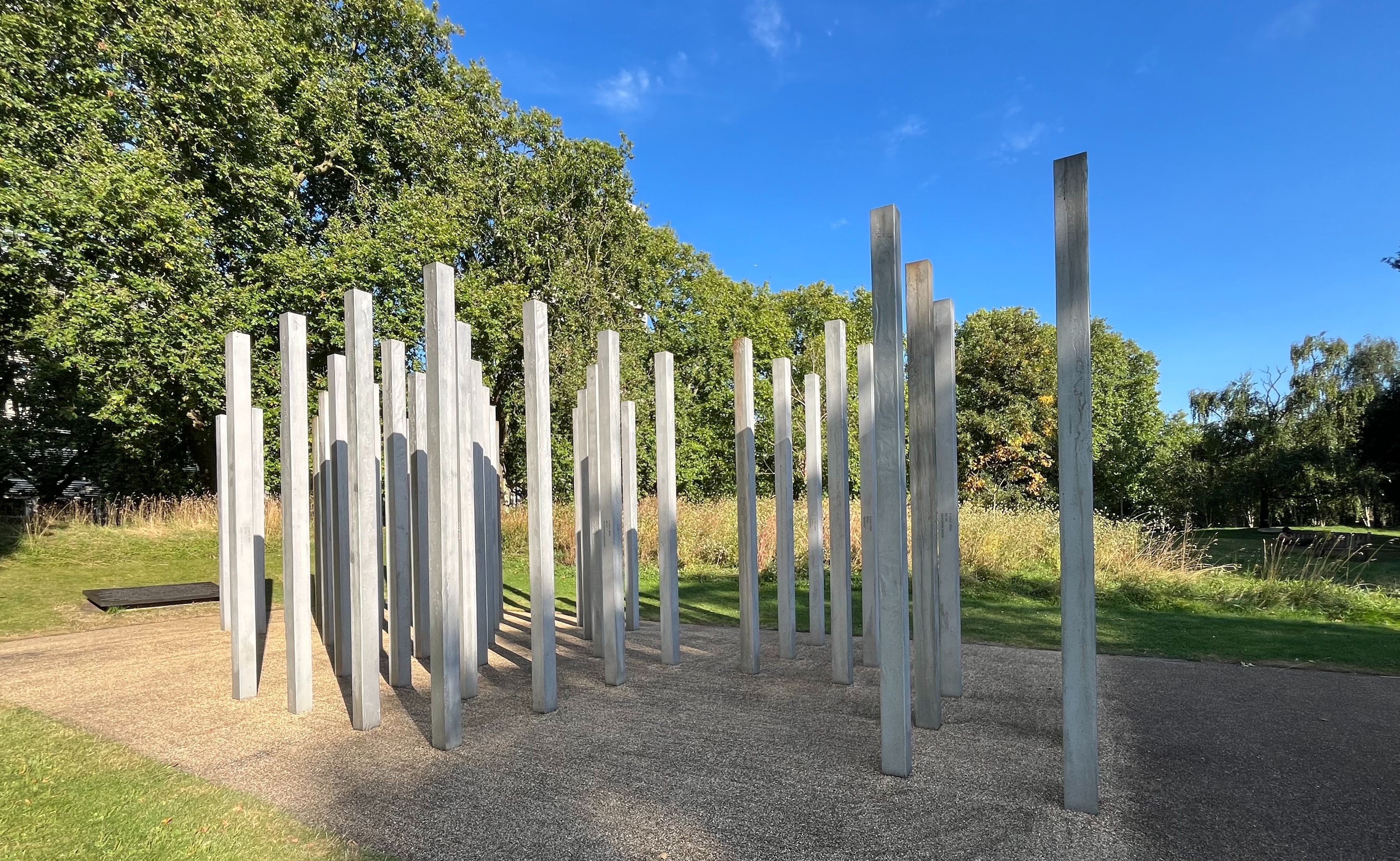
We also visited the 7 July Memorial, which is located within Hyde Park. Ever since knowing there was a memorial to this tragedy, I have wanted to take the time to visit this memorial to honor those who lost their lives in one of the deadliest terrorist attacks to ever happen in Britain.
The memorial, which is located on the southeast corner of Hyde Park, is undoubtedly a fitting tribute to those killed; each of the pillars lists an individual along with the place and time they were killed. The memorial made me feel this sense of resilience and strength as it reminded me of the support pillars used in the foundations of buildings. While it is important to remember and honor those who were killed, it’s equally important to remember those who continued to use the public transport of London in the days following the attack as they showed great resilience and strength.
While we were there, I witnessed a child bouncing a football between the posts while his parents watched, laughing and smiling. I understand the child had no idea of what he was doing, however I do believe the parents ought to have given it some thought since it is clearly a memorial. This is something that I do feel is extremely disrespectful and upsetting and something I will consider writing a future blog article about.
The West Side of Highgate Cemetery
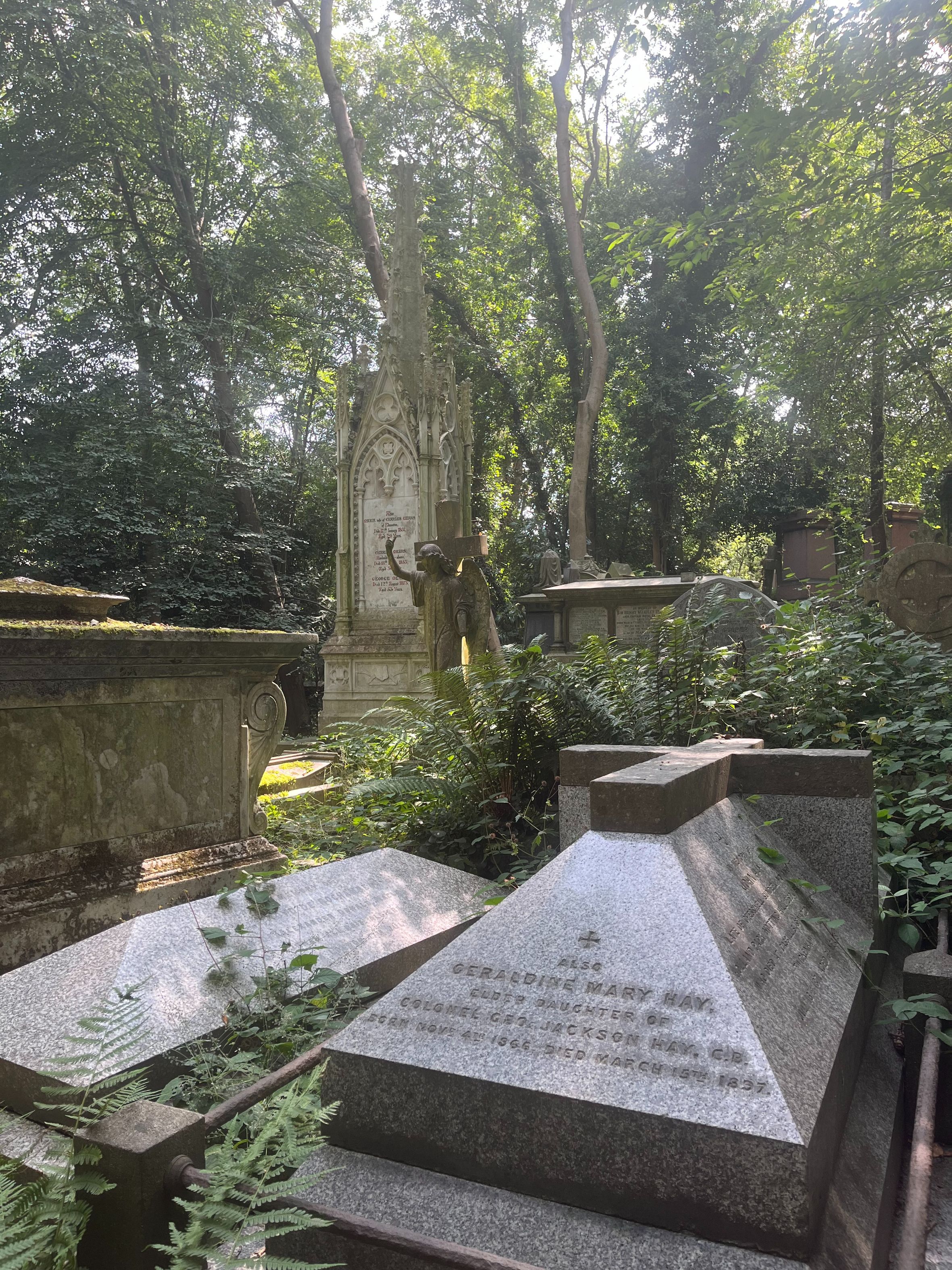
I always intended to return to Highgate and see the Westside Cemetery after seeing the Eastside, and I was certainly not disappointed. I went on a guided tour of the Westside with a gentleman whose name I can't recall now but will add here when I do. He was very knowledgeable on the history of Highgate and the tombs and graves seen throughout the cemetery.
Despite being older than the east side, the west side of the cemetery shares many of the same features, with the trees casting a canopy over the headstones and graves, making nature one with the dead. However, the graves and tombs of the westside undoubtedly display more of a blend of Egyptian and Gothic Victorian architecture, even though the eastside does contain some spectacular architecture.
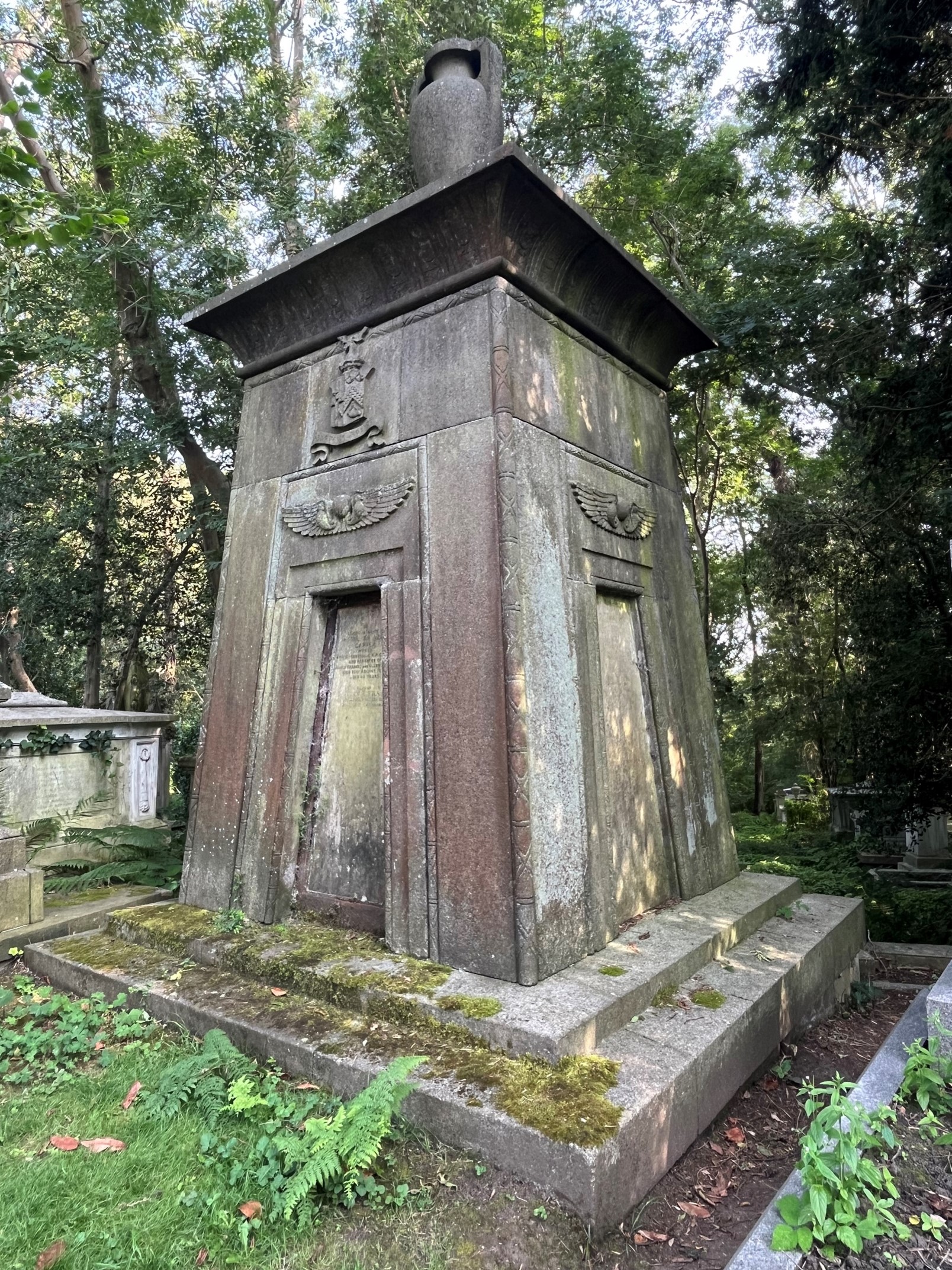
The most fascinating thing he talked to us about was Victorian symbolism and how this was incorporated into the tombs of their dead. For instance, one of the tombs he showed us, victory reefs surrounded the entrance along with cannons encircling the tomb were actually represented sideways since the Victorians showed symbolism in the opposite way. This tomb represented a family of military occupation. He then showed us another example of Victorian symbolism: a broken Roman column, which represents a life suddenly cut short. Despite the fact that Victorian society was renowned for its mourning practices, these grave symbols help us and future generations to comprehend Victorian burial customs.
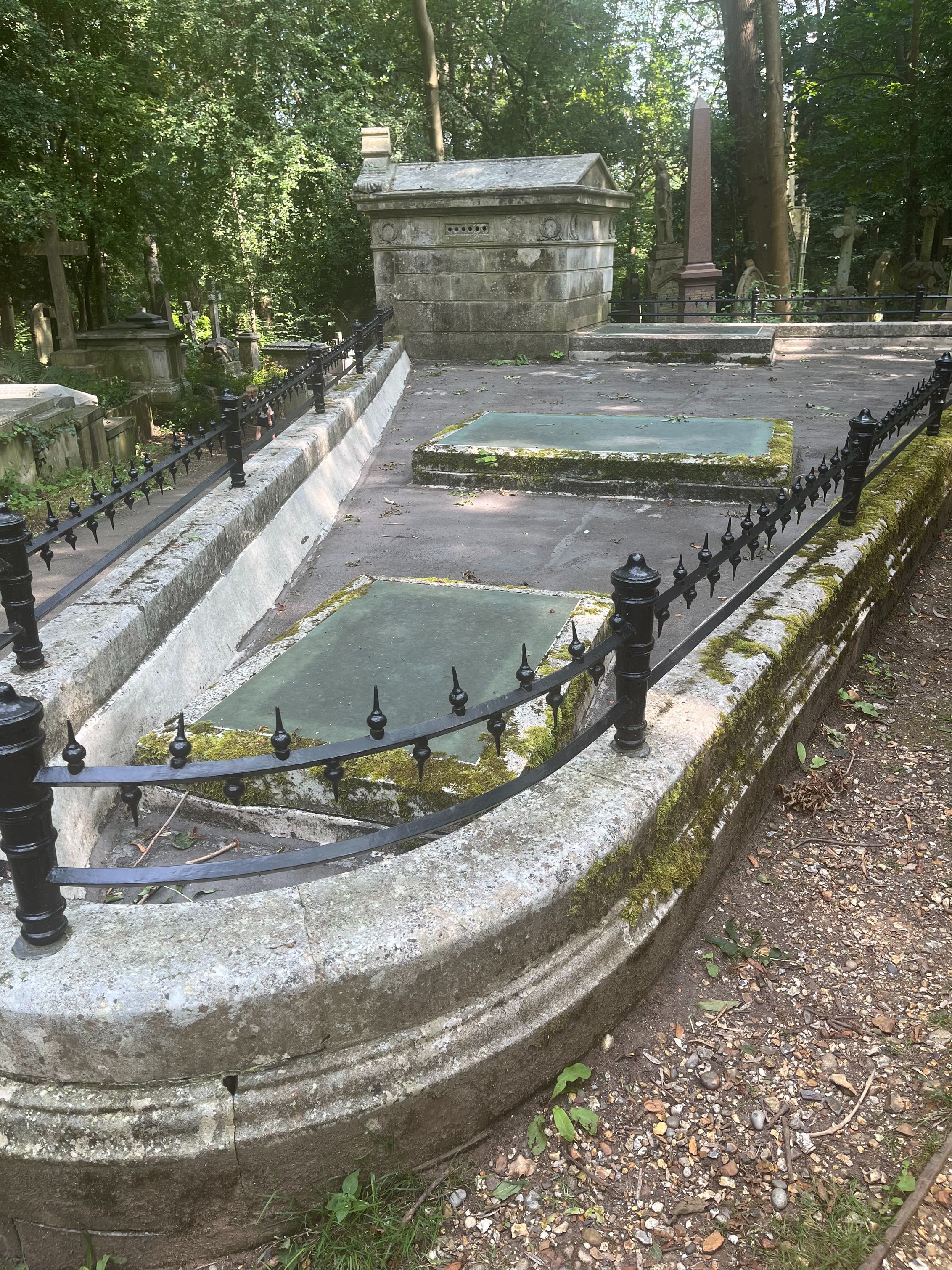
He also talked about how Victorians would have frequently visited the graves of their dead and would have had picnics within the cemetery, it would have been considered a lavish day out for the upper class of society. A place to feel closer to their dead and a place to enjoy the elaborate architecture of the Victorian era.
The Tower of London
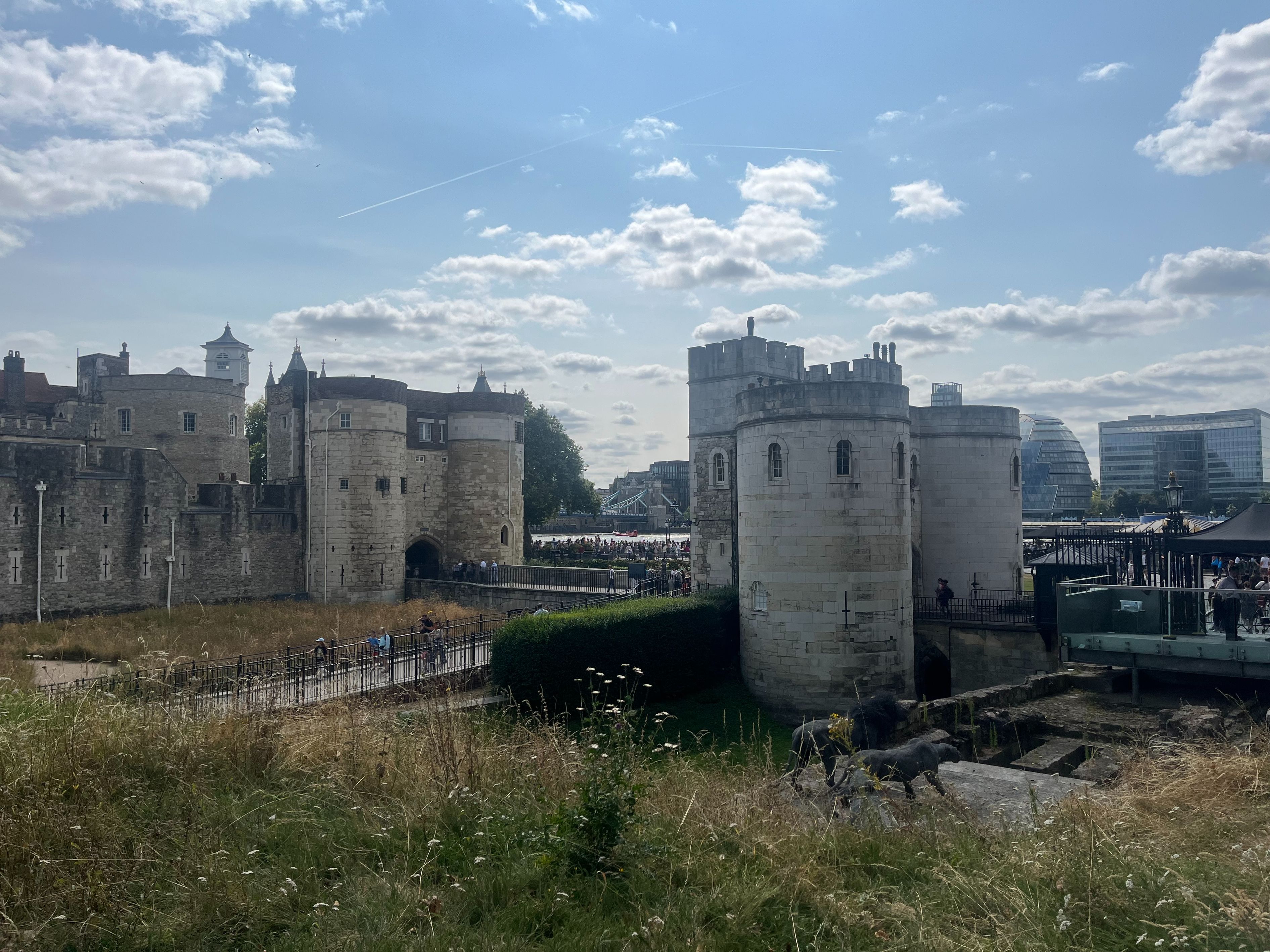
We spent our Sunday learning about the macabre and gruesome history of the Tower of London. The Yeomen Warders (Beefeaters) were actually offering a complimentary tour to those who had purchased a ticket in advance. These are on offer to visitors every 30 minutes. I would highly suggest joining one of these tours—not only is it free, but the Beefeaters go into great detail of the tower’s history and those executed with incredible enthusiasm.
As you might expect, these tours are extremely popular, which makes it difficult for people in the back of the group to hear. However, the way these tours are conducted gives people in the back the chance to be at the front due to the route the beefeater takes.
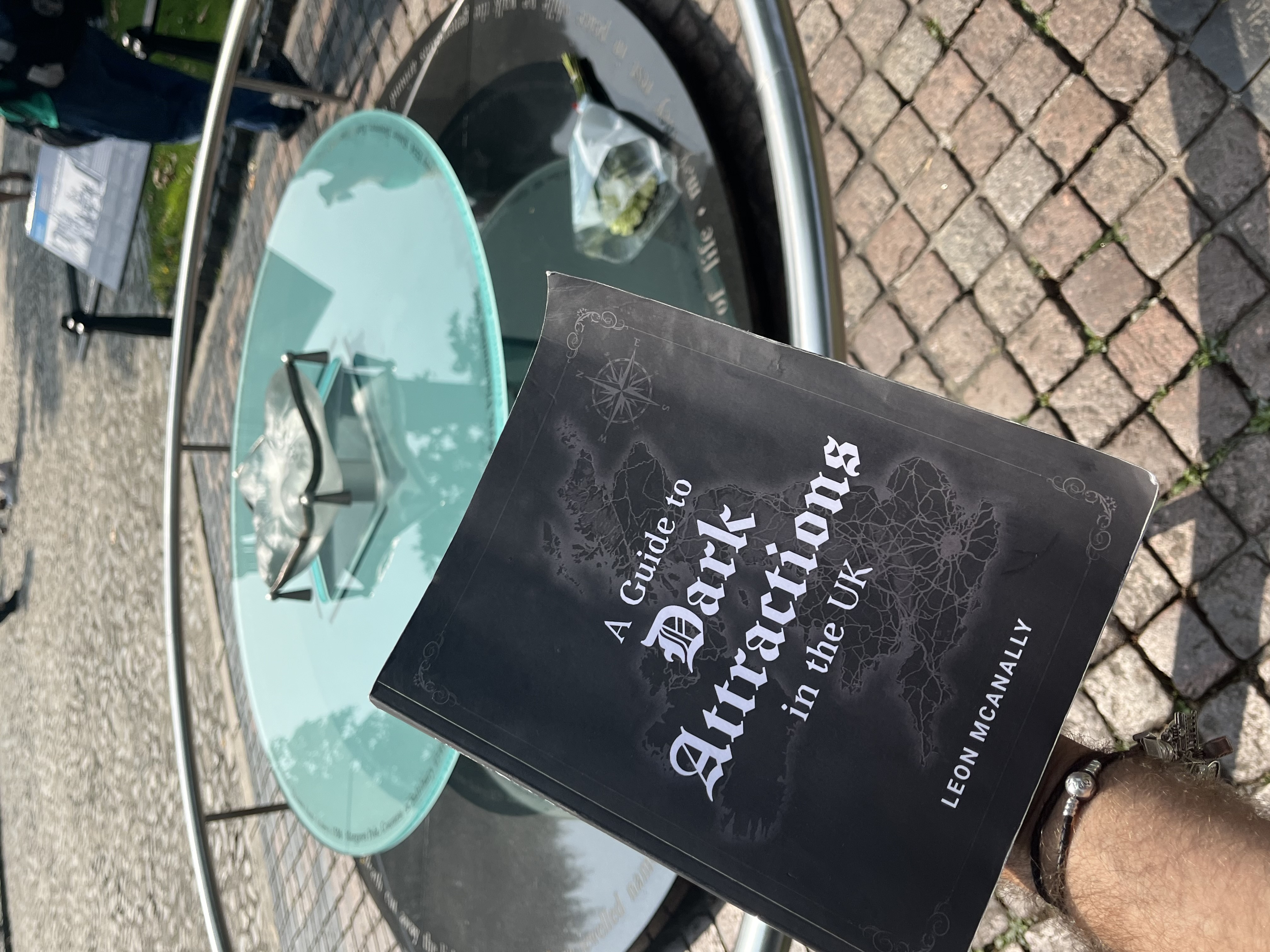
The Beefeater made a point of emphasizing that many of the executions actually occurred on Tower Hill rather than inside the tower on Tower Green. He also mentioned the memorial to those who were executed on Tower Green, which I actually talk about in my book, A Guide to Dark Attractions in the UK.
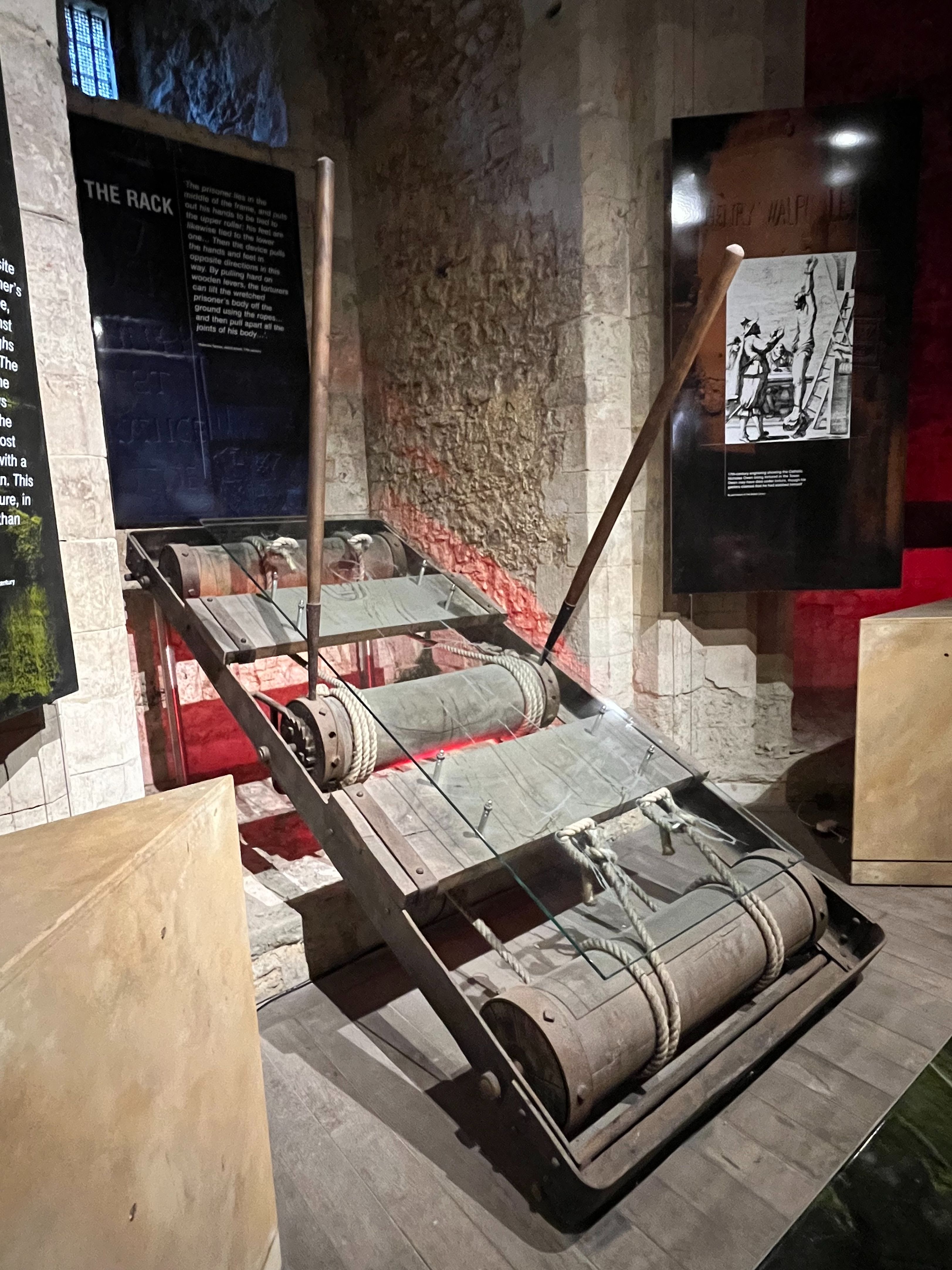
The Crown Jewels, the tombs' of Queen Anne Boleyn, Catherine Howard, and Lady Jane Grey, the execution block, and the axe kept in the White Tower are just a few of the fascinating things to see at the Tower of London. However, the torture devices on display in the Tower's Torture chamber—the Rack and Scavenger's Daughter—are among the most fascinating things on display. The Rack would been used to tie the prisoners’ wrists and feet to and pull apart all of their joints, whereas the scavenger would have done the opposite compressing the body, eventually crushing the body of the prisoner. It is believed that Guy Fawkes was tortured using the Rack before being tried for high treason in January 1606. I am not sure which of these would have been worse for prisoners.
The Tower of London is an iconic landmark that can be seen on many items of London merchandise, but what really sets it apart as one of the most fascinating and interesting sites to visit in Britain is its rich history.
